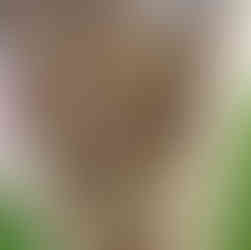To find Waldo... errr our Bee Queen!
- May 3, 2024
- 3 min read
When we ordered our Bees we got our package with an unmarked Queen. What does that even mean you wonder? An unmarked queen is simply a queen bee in a beehive that hasn't been marked with a dot of paint on her thorax. Beekeepers often mark queen bees with a small dot of brightly colored paint to make them easier to spot during hive inspections. They literally sell paint kits for this because you can't just put any old paint on a bee. The color of the paint corresponds to the year the queen bee was introduced into the hive, which helps you as a beekeeper to track her age and productivity because every few years, you'll need to re-queen your hive so that it remains productive. Also we wanted to see if we could add a Super on top yet. Hoooold up Mel... what is a Super?
I agree, it's a lot of new terms and we've learned those as we went along.
In beekeeping, the "super" refers to a section of the beehive where surplus honey is stored by the honey bees. It's essentially an additional box or compartment placed above the brood chamber (where the queen bee lays her eggs and the worker bees care for the larvae) to provide extra space for honey storage. Supers are typically added to the hive during the flowering season. The honey bees then collect nectar from flowers, convert it into honey (Ha! Wait until we get into that at a later blog in time!), and store it in the cells of the frames within the super. Once the frames are filled with capped honey, indicating that it's ready for harvest, beekeepers can remove the super and extract the honey. We will not be doing that, though, since we have a Flow Hive, and it's just not needed. On our Hive, we turn a key, the Flow frames separate, the Honey flows in a Jar on tap, and we turn the key again to restore the Frames to their original state... minus the Honey. No disturbance to the bees and from our perspective, no messy extraction job.

Back to the Story! We put on safety equipment, lit our Bee Smoker, and marched into the yard. Now, you may wonder why beekeepers have smokers. The Smoker serves several purposes:
Calming Bees: When bees detect smoke, they interpret it as a signal that their hive is at risk of fire. In response, they gorge themselves on honey in preparation to flee the hive, reducing their aggression and making them less likely to sting. (We didn't really need it for this inspection as our Bees were super calm but safety should always be number 1)
Masking Pheromones: Honey bees communicate using pheromones released by their bodies. When a hive is opened for inspection, the disruption can trigger defensive behavior in the bees. By introducing smoke into the hive, the smoker masks these alarm pheromones, reducing the likelihood of defensive responses from the bees. Bees communicate and respond to all kinds of things and we'll get to that at a later time as well.
Hive Inspections: The calming effect of smoke allows beekeepers to conduct hive inspections more safely and efficiently. By minimizing the risk of bee stings and aggression, beekeepers can work more comfortably and effectively, which is essential for tasks like checking hive health, monitoring honey production, and managing hive conditions which is exactly what you do Hive inspections for.
Today, our primary task was to find the Queen and mark her. This task included looking at all of our frames to see if you could spot her. Now, in a sea of bees, this is a near-impossible task. If you look at the following pictures, you kind of get an idea of what we were looking at, and it was really like trying to find Waldo! It's also the reason why marked bees are so important because you want to spend as little time as possible disturbing your bees!
Spoiler Alert: We were NOT successful, but practice makes perfect. Someone told us spotting your Queen takes practice, and we're definitely here for that!
Luckily, we did not really need to use the Smoker or wear the bee jacket as our bees were chilled out and relaxed, but it is still a good practice and safety measure. We made sure we put the frames back in the right order and closed up the hive. Oh, we also didn't add the Super yet. The standard rule is 7/10, or when the bees cover 7 out of the existing 10 frames, at that point, it's the proper time to add the Honey Super! We'll just have to practice more patience :)














Comments